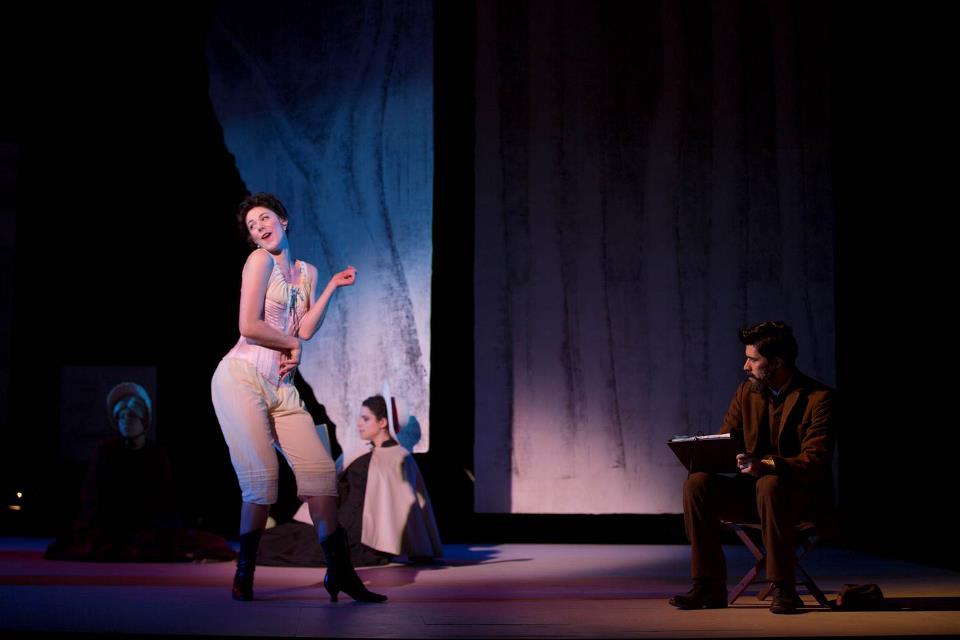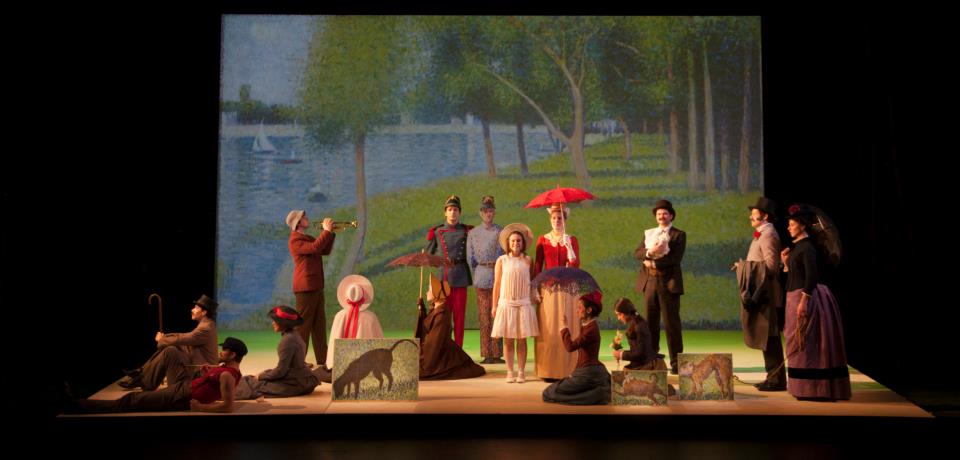Preview of Latinos Who Look Like Ricky Martin, Yale Summer Cabaret
The final show of the Yale Summer Cabaret’s Verano season opens this week, a new comedy by Emilio Rodriguez in which three college-student members of a Latino Student Union meet to decide how to make their club both inclusive and authentic. This goal quickly leads to having to “out Latino each other” to become the president the club needs.
The question, as the Summer Cabaret’s co-artistic director Jecamiah M. Ybañez, who directs the play, says, is about “how we shape identity and how people respond.” The three students—Xavier, Monica, and Isaac—have different ideas about how to appeal to other students who may or may not identify themselves with the group’s interests. In fact, the trio may have little in common other than a desire to represent Latinx culture, and even that shared interest might be a bit too amorphous for the kind of solidarity that Xavier and Monica—who want to “put the unidad in communidad”—aim at.
The play’s title, Latinos Who Look Like Ricky Martin, is itself a test of sorts. Ricky Martin, born Enrique Martin Morales in San Juan, Puerto Rico, became known as the King of Latin Pop, with a worldwide fan base, beginning in the mid-90s, and a cross-over hit that topped American charts in 1999, “Livin La Vida Loca.” Does his fame and his looks make him an instant spokesperson for Latinos everywhere, or only those who “look like” him—in terms of features or coloring—or sound like him, or who would like to? And what if you’re not even much into a figure who becomes some kind of emblem for “people like you”?
For Ybañez such questions aren’t merely academic. Raised in San Antonio, TX, Ybañez doesn’t speak Spanish and, as a kid in the ‘90s when Ricky Martin’s first fame came, didn’t identify with the Spanish-language hits that made the singer’s name early on. For the director, Martin made a bit more of an impression when he finally came out as gay in 2010. A fact that adds another dimension to Martin’s identity and so complicates the very question of whether anyone can be a normative figure to unite a people’s full diversity.
And that’s the point, for Ybañez, of doing the play. As our social world becomes increasingly polarized and exclusive, with many preferring to communicate only within a bubble that ostracizes other members of the population, comedy can help portray some of the unsavory aspects that come with policing borders—in day-to-day exchanges, or as national policy.
Jecamiah M. Ybañez
The idea that “all people of a particular culture share one particular identity” is one that Ybañez said is not uncommon among advocates for identity politics. Such views can lead to “shaming,” where some members of, for instance, a Latino Student Union, may be “too Latin,” or “not Latin enough,” depending on their genetic and cultural antecedents. To Ybañez, instead of questioning others’ commitment to a given trait or attribute in order to dismiss those who “don’t get to be ‘in,’” such questioning should be “aimed to understand, to get to know” others and their differing backgrounds.
Further, what should the club—or any community based on free association—be? Each of the characters has a slightly different emphasis: the club could be simply “a hangout” for whoever likes Latinx culture—the food, the music, the look; or must it have initiatives to give Latinx culture a voice and an agenda in the larger culture at the school; or should it aim above all to welcome those who might not feel they fit in elsewhere?
The different views of those questions are dramatically relevant to the play, and are handled comically. Only one of the three will get to be the club’s president. Is winning a matter of having a vision and leading? Is it giving the people what they want? Is it making allegiances with allies who can help convince others? While the stakes are small for the dwindling numbers who make up the club, the play’s sense of how deep emotional need can readily escalate to absurd lengths is all-too American.
The cast features Robert Hart as Xavier and Jackeline Torres Cortes as Monica and Dario Ladani Sanchez, who was already seen at the Cab this summer in The Swallow and the Tomcat, as Isaac. Shows are this week, Thursday, Friday, Saturday at 8 p.m. and at 11 p.m. Friday and Saturday; and at 8 p.m. next week on Wednesday, Thursday, Friday and Saturday, with 11 p.m. shows the latter two nights.
For tickets, dining menu and other information, go here.
Latinos Who Look Like Ricky Martin
By Emilio Rodriguez
Directed by Jecamiah M. Ybañez
Yale Summer Cabaret—Veranos
August 8-17, 2019



